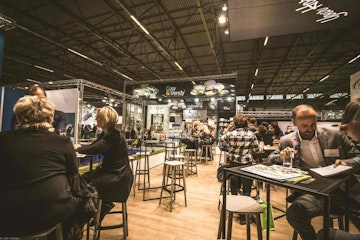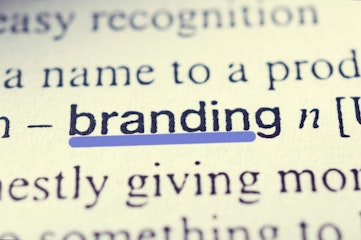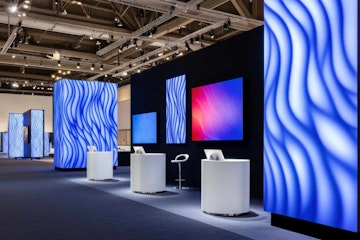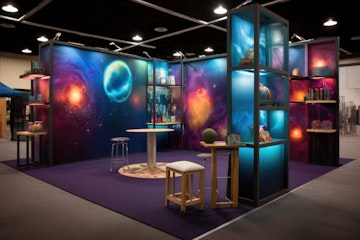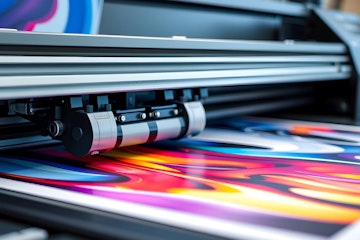Trade shows are a bit like speed dating for brands. You’ve got a few seconds to grab someone’s attention, a couple of minutes to make an impression, and maybe-if you’re lucky-a follow-up after the event. But here’s the thing: people don’t remember stats, specs, or corporate jargon. They remember stories. That’s why storytelling is one of the most powerful tools you can bring to your trade show booth. Done right, it turns your brand from “just another exhibitor” into something people genuinely connect with. Here are seven storytelling strategies that’ll make your stand stand out for all the right reasons.
1. Know the Story You’re Telling (and Who You’re Telling It To)
Before you start planning the visuals or printing banners, get clear on your story. What’s the why behind your brand? What problem are you solving? And most importantly, who’s listening? The best trade show stories are tailored - not generic mission statements or polished marketing fluff. For example, if your audience is small business owners, your story should speak to growth, hustle, and making things happen. If you’re targeting designers or engineers, focus on creativity and precision. People stop for stories that reflect their own goals back at them.
2. Turn Your Stand into a Narrative Space
Your booth is more than just a physical setup - it’s the stage for your story. Every element should work together to communicate your message visually and emotionally. Use your graphics, lighting, and layout to guide visitors through a narrative. Start with curiosity (eye-catching visuals), move to clarity (a concise value statement), and end with connection (a demo, conversation, or takeaway). Interactive screens, short videos, or simple design cues like arrows and floor graphics can subtly move people through that journey. Want to take it a step further? Illuminate your story with energy-efficient lightbox displays that highlight key visuals and make your message pop - literally.
3. Make Your Visitors the Hero
Here’s the golden rule of storytelling in marketing: your brand is not the hero - your customer is. Your job is to play the guide, the wise mentor who helps them solve a problem or achieve something better. So instead of “we provide the best solutions,” try “we help businesses like yours save time, money, and headaches.” People don’t care about what you do until they see what it does for them. Every conversation, demo, and visual should reflect that shift. Make visitors feel like the protagonist in their own success story, not a spectator in yours.
4. Use Emotion, Not Just Information
Even in the most technical industries, emotion drives decisions. It doesn’t mean you need to make people cry - it just means connecting on a human level. Think excitement, relief, pride, or curiosity. Use real customer testimonials, case studies, or visuals that show the impact of your product in action. A short before-and-after narrative can do more than a dozen bullet points ever will. For more inspiration, see our guide on emotional storytelling at trade shows - it’s all about how to create instant resonance without overdoing it.
5. Keep It Short, Snappy, and Shareable

Trade shows are sensory overload. Visitors are bombarded with sounds, lights, and pitches - so brevity is your friend. Distil your story into bite-sized moments that stick: a single striking image, a headline that makes people smile, or a 30-second demo that gets them talking. You’re not writing a novel; you’re giving them the trailer that makes them want to see the film. And if you can create a moment worth sharing - a clever tagline, an interactive element, or a visually stunning setup - your story travels beyond the event via social media. That’s free reach, powered by good storytelling.
6. Empower Your Team to Tell It Naturally
No one wants to talk to a robot in a branded polo shirt reciting a script. Train your booth staff to tell your brand’s story in their own words. Encourage them to share quick anecdotes or customer wins that feel genuine. It’s fine if they add their personality - in fact, it’s better. Consistency matters, but authenticity wins every time. The more naturally they speak, the more believable your story becomes. Think less “presentation mode,” more “enthusiastic conversation.”
7. End with a Memorable Takeaway
The final act of your story should leave visitors thinking about you long after they’ve moved on. Maybe it’s a striking piece of branded collateral, a clever giveaway that reinforces your message, or simply a strong call to action. Even a short email follow-up that references your trade show conversation can help tie the narrative together. The best stories have a satisfying conclusion - yours should, too. Let visitors walk away feeling like they’ve discovered something meaningful, not just picked up another leaflet.
Bringing It All Together
Storytelling at trade shows isn’t about spinning a dramatic tale or hiring an actor to play your CEO (although, points for creativity if you do). It’s about weaving coherence, emotion, and intent through every part of your presentation. A well-told story has stopping power - it makes people pause, engage, and remember. When someone walks away from your booth and says, “That brand gets it,” you’ve done your job. Trade shows aren’t about shouting louder than everyone else; they’re about speaking with clarity, confidence, and purpose. Build your story around the audience, light it up with great visuals, and let your team bring it to life. Because in a hall full of noise, the brand that tells the best story is the one people keep talking about long after the lights go down.

